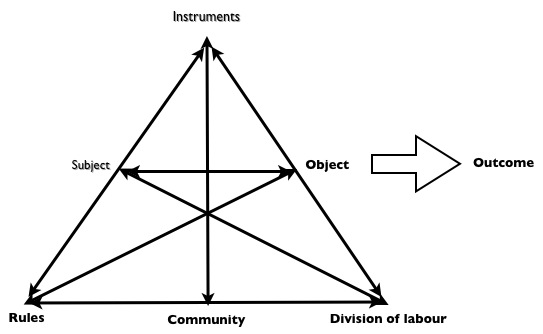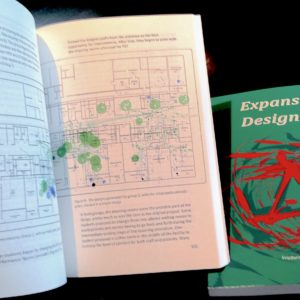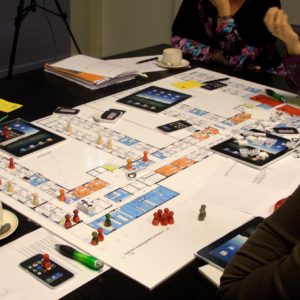Design ethnography is a field study method that aims at uncovering user needs and innovation opportunities. Through this method, anthropologists can help understand the context, bringing up semantic, emotional, and social issues that may represent innovation opportunities. However, most design ethnographies are not carried out by trained anthropologists.
Design ethnography is typically conducted by designers themselves, in an ad-hoc fashion. I’m not against this simplification of ethnography, however, I suggest my design students adopt a social theory before they start doing the study, otherwise, they might lose too much time figuring out what to study.

Among various theories, Activity Theory has been shown to be particularly useful for design ethnography due to its accessibility and ability to map complex systems. Rooted in Marx’s notion that human existence is shaped by social activity, Activity Theory emphasizes how actions are mediated by tools, signs, and cultural practices. It provides a structured lens for analyzing the dynamics between people, objects, and communities within an activity system.
Activity Theory’s framework can be broken down into key analytical components:
- Object of Transformation: What are participants trying to change or achieve?
- Instruments: What tools or resources mediate their actions?
- Community: Who participates, and how do they form a collective?
- Division of Labor: How is the work distributed?
- Rules: What norms regulate the activity?
- Expected Results: What outcomes are anticipated?
- Activity subjects: Who is involved?
This structured approach ensures a comprehensive understanding of the activity under investigation, from its social dynamics to the tools involved. To operationalize these concepts, various tools can be used, including direct observations, interviews, and artifacts like documents and photographs. The following design artifacts can help illustrate relationships and uncover contradictions within the activity system:
- Object of Transformation: Mind map, Play-doh model
- Instruments: Actor-network diagram, “What’s in your bag” photo
- Community: Community mapping, Community collage
- Division of Labor: Sequential diagram, Isometric infographic
- Rules: Workflow diagram, Decision diagram (algorithm)
- Expected Results: Value proposition canvas, Fishbone diagram
- Activity subjects: Stakeholder mapping, Personas
While theories like Actor-Network Theory or Cognitive Engineering are also valuable, Activity Theory stands out for its emphasis on the interplay between social and material elements. Researchers should remain cautious of bias, premature conclusions, or distortions that might arise when fitting data into a theoretical framework.
The following slides and audio introduce the framework with practical examples of how to organize the evidence collected in the field. This material is part of the entrepreneurship program I developed at PUCPR.
References
Amstel, F. M.C. van; Zerjav, V; Hartmann, T; Dewulf, G.P.M.R; Voort, M.C. van der. 2016. Expensive or expansive? Learning the value of boundary crossing in design projects. Engineering Project Organization Journal, 6 (1), Pages 15-29. DOI: https://doi.org/10.1080/21573727.2015.1117974

